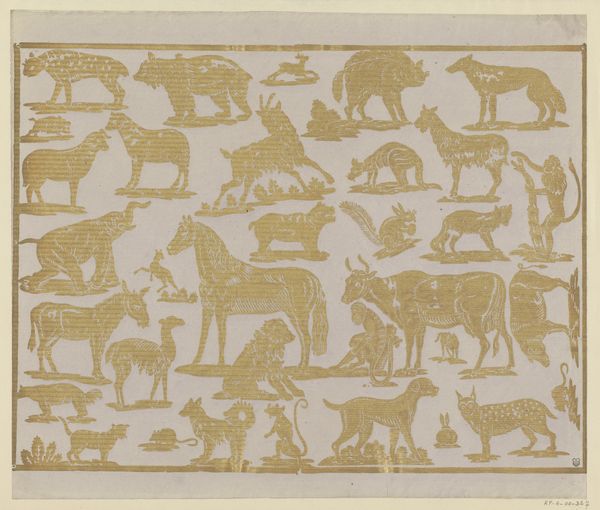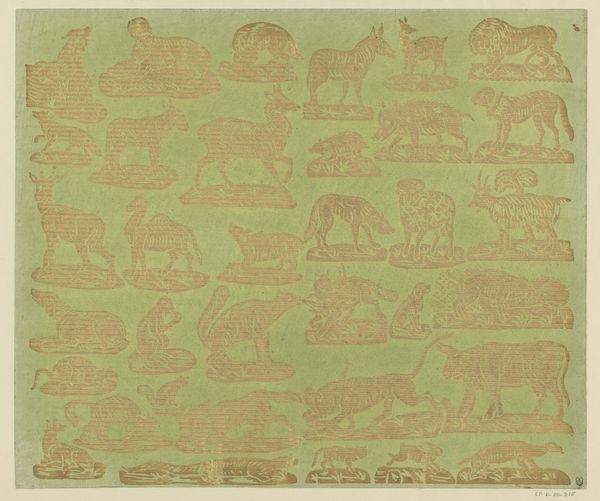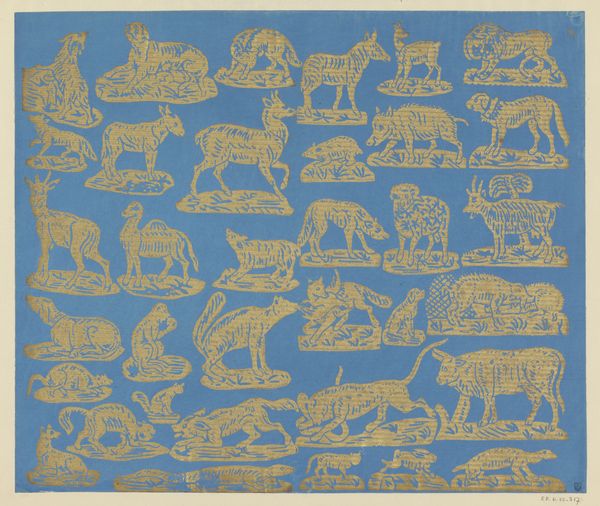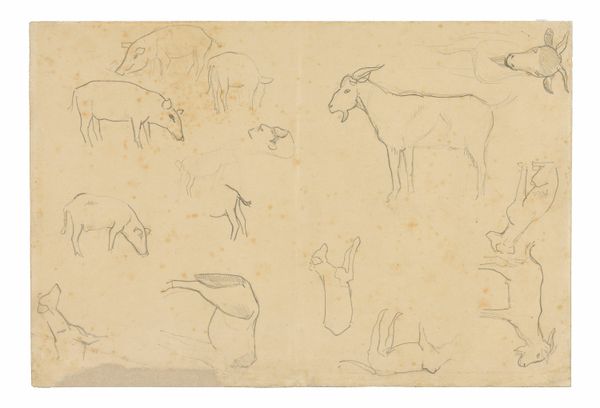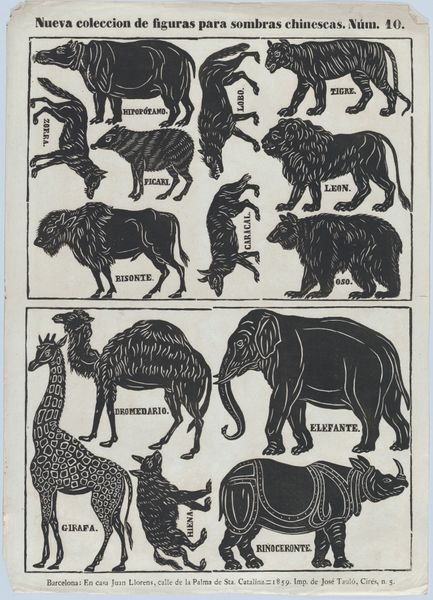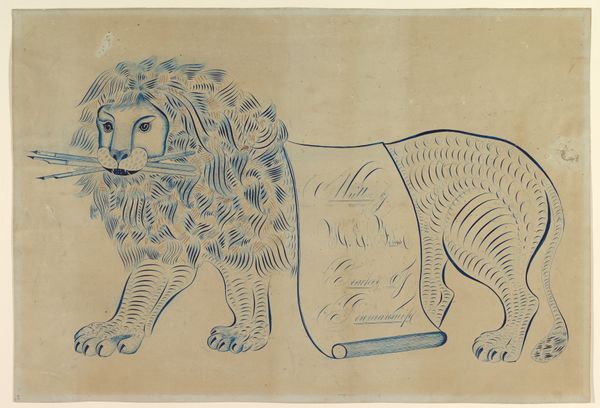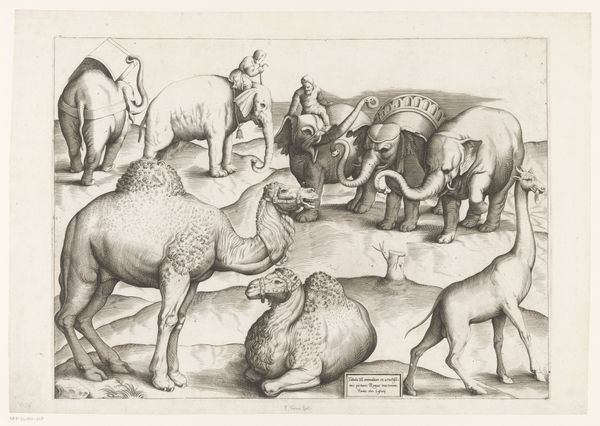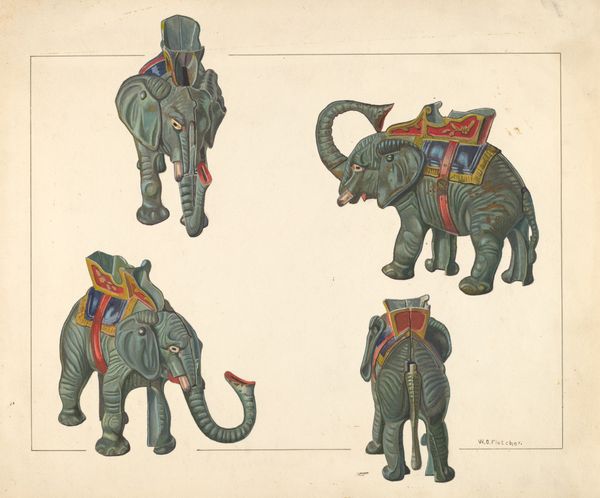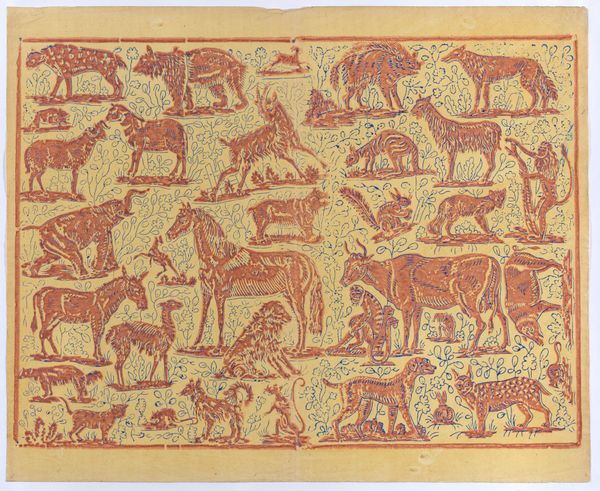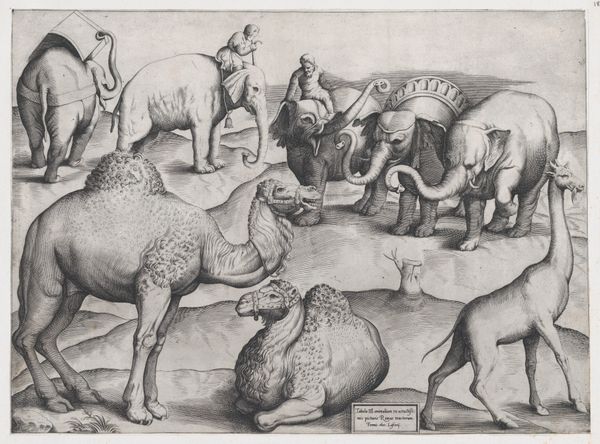
Sheet 5 of figures for Chinese shadow puppets 1845 - 1855
0:00
0:00
drawing, print, woodcut
#
drawing
# print
#
figuration
#
coloured pencil
#
woodcut
Dimensions: Sheet: 12 13/16 × 18 1/8 in. (32.5 × 46 cm)
Copyright: Public Domain
Editor: Here we have Sheet 5 of figures for Chinese shadow puppets, created sometime between 1845 and 1855. It’s a print – looks like a woodcut perhaps? – featuring a bunch of different animals in silhouette. It feels almost like a page torn from an old textbook, but I'm intrigued by the decision to render all these creatures as stark black shapes. What can we interpret from this, especially within its historical context? Curator: This sheet, while seemingly simple, opens up complex questions of representation and power. Think about the context: mid-19th century. These weren't just representations of animals, but tools for storytelling in shadow puppet theater – a powerful medium, particularly for communities excluded from other forms of expression. What narratives were these animals enacting, and whose perspectives were prioritized? Consider also how the visual reduction of these creatures to silhouettes mirrors the colonial impulse to categorize and control the natural world. What does it mean to see nature distilled in this way? Editor: That’s a fascinating point. So, the choice of animals itself, then – elephant, giraffe, rhinoceros – becomes politically charged? Were these animals commonly known, or were they more exotic, functioning almost as symbols of imperial reach and “discovery”? Curator: Exactly! The selection highlights the exotic – animals largely unfamiliar to the intended audiences, signifying the reach of colonial power and fueling the imagination with the 'Other.' Think about the tradition of shadow puppetry: often didactic, sometimes subversive. Who controlled these narratives? Whose voices were amplified, and whose were silenced? The act of silhouetting, therefore, is not just an aesthetic choice, but a political one. It can erase nuance and promote a simplified – potentially dangerous – understanding of both the natural world and the cultures it represents. Editor: That really shifts my understanding. I initially just saw it as a straightforward illustration. I see how shadow puppetry isn't a neutral activity but, potentially, a politically and socially charged tool. Curator: Precisely! By looking through this lens we confront power structures, representation, and cultural narratives embedded within the image, moving beyond aesthetics and closer to understanding its social impact.
Comments
No comments
Be the first to comment and join the conversation on the ultimate creative platform.
